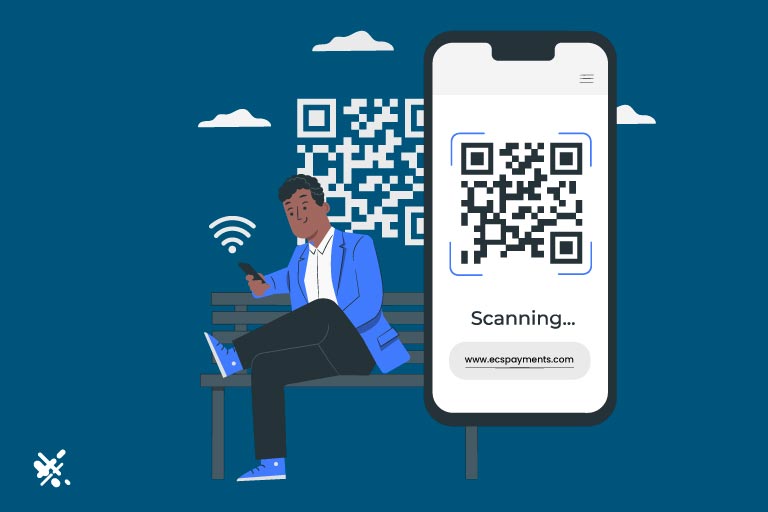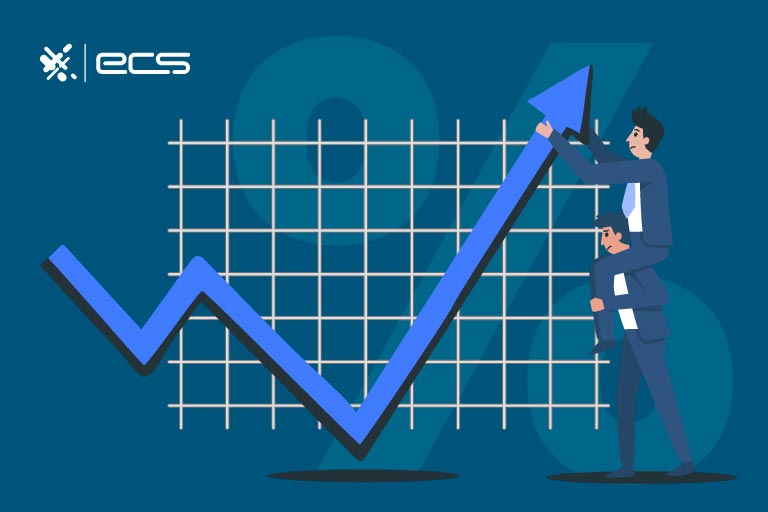They say that only two things in life are certain: death and taxes. And while this article won’t offer philosophical takes on either one, it will discuss a certainty that business owners face: credit card processor fees.
If you’re a merchant who accepts debit and credit cards and/or mobile payment methods, fees from your credit card processor are a certainty you must accept in return for the convenience of plastic. But what happens if your credit card processor has raised your rates?
The Winds of Change are Blowing
Spoiler alert: it may be time to move to a different merchant service company with a new credit card processor. But that’s not all. You should also examine why the credit card processor raised your rates. That way you can avoid the same problem in the future.
You may also discover that some of those reasons are beyond your control, which might add a layer of nuance to your decision. Finding the best credit card processing company for your business can be a daunting task. But hopefully, we can help provide some further insight.
One option you may be considering, even slightly, is tossing that POS in the garbage—and by POS, we mean point-of-sale (POS) hardware, not…you know. It’s likely you already know that’s a bad idea. But just in case it’s something you’re contemplating, we’ll go down that rabbit hole.
What if We Just Ditched the Credit Card Processor and Went All Cash Only?
Cash is King, as the adage goes, but society is fast moving toward cashlessness.
Almost Half of Consumers Never Use Cash
According to Pew Research, 41% of consumers make none of their purchases with cash. Zip. Zilch. Nada. Can you imagine losing 4 out of 10 customers?
It’s unlikely that even your most loyal customers would add running to the bank or ATM to their errand list just to keep shopping with you. Although some might, making your business cash-only means losing a significant portion of your business.
While it’s true that the same poll found that 14% of consumers pay for everything with cash and that 44% of consumers make some of their purchases with cash, there are other factors to consider, such as how much people spend with cash versus plastic.
Consumers Spend More With Plastic
The geniuses over at MIT have discovered that people spend more with credit cards. Which activates the rewards center of our brain. It makes sense (even if it doesn’t in the long run) because once you spend cash, it’s gone. But once you spend credit, you get points, cash back, or airline miles. Then you pay 22% interest unless you pay it off every month, but that’s a different story.
These findings in academia are corroborated by private-sector research. Namely, the people who assess your every purchase and render judgment on how easy your life will be moving forward. Funny enough, Experian found that spending habits tell a similar story with debit cards, even though they’re not linked to rewards programs.
While the average cash transaction is $22, the average non-cash plastic transaction is $112. And non-cash means both debit and credit. In other words, customers spend more with plastic. So in summary, not only would you be losing customers, but you’d also likely be lowering the value of the average transaction. Killing one business with two birds. Or something like that.
Not Ideal For eCommerce Merchants
Lastly, if you are an eCommerce merchant, accepting cash only, or at all, is impossible. There is no way to accept cash through a virtual payment gateway. Card, ACH, and BNPL processing is the only way to go for online merchants. Unless you offer mailed checks or cash, which is definitely not ideal, for both you and your customers.
So the idea of accepting cash is out. And we won’t bother to delve into checks, since checks are pretty much going the way of the Italian bankers who first leveraged them (the history books). In case you need some hard numbers behind that, the Atlanta Fed found that only 3% of consumers under age 44 were using paper checks to pay for anything and 0% of consumers under the age of 25.

Maybe We Could Try QR Codes?
What about QR codes? If you’re not in the know, a QR code is a checkerboard pattern that consumers can put into the sights of their camera phone. It will then guide them to a website such as a payment portal. This could be an option—one that is actually increasingly used in the food business—but it has some downsides.
One is that these transactions are coded as card-not-present. Which means higher transaction fees no matter who your credit card processor is. And if you’re wondering why restaurants use them, the tradeoff between more efficiency and the fees is well worth it. For brick-and-mortar businesses that are not turning tables, it’s not.
Another problem with QR codes is that unless you pick out a new credit card processor to work with your business, it still does not solve the raised fee problem. You could use QR codes to guide customers to a big P2P payment app like Venmo or Paypal. The problem with these vendors is that they are actually payment aggregators—collecting businesses under their own merchant code.
As such, they are much more strict about what types of businesses they’ll work with. At any sign of trouble, they can drop a merchant. And to add insult to injury, their customer service is not able to be tailored to most smaller businesses.
A QR code, if the shoe fits, might be something to explore. Especially if your business is mobile or has satellite locations. But that’s a topic you should discuss with a dedicated payment processor. So you’re back to square one: what do you do when a credit card processor raises your rates?
Why Did Our Credit Card Processor Raise Our Rates and Fees in the First Place?
But let’s keep building the tension by discussing another relevant concern. Why did your credit card processor raise your rates in the first place?
One issue is the broader economy, suffering for our sins. Namely printing trillions of dollars during the Covid Pandemic. Triggering inflation that (some worry) might reach biblical proportions (which makes it sound like you should start loading animals onto a boat).
Inflation means everybody has to raise their prices for everything. Even Mastercard, who famously insists that the most important things are free. As it relates to payment processing, the raising of interest rates by the Federal Reserve is a key trigger. Just as it is with consumer lending like mortgages.
Of course, the Fed (as it’s affectionately named) insists that raising rates will slow down the economy and moderate price growth. A conclusion that according to some may involve robes, chanting, and strange symbols printed on the dollar bill.
The all-seeing Eye of Providence aside, rates are going up, and that affects the payment landscape, which involves banks and clearinghouses. Visa and Mastercard are just two of the card networks that have raised their fees. Earning the ire of merchants whose profit margin will be nibbled away by higher interchange rates.
These factors are entirely beyond your control. Unless you decide to run for president and make sweeping economic changes. As McDonald’s used to say: “Hey, it could happen.” Until then, you’ll have to just ride out the cyclic nature of the economy and hope that fees come down again.
Occasionally the credit card networks will change their fees. For example, American Express has recently made its credit card processing fees more manageable for small businesses through the OptBlue program.
Sorry to Be Blunt, But Some of it is Your Fault–Not Your Credit Card Processor’s
Now moving on to some of the factors that are in your control. These are some particulars of how you run your business that may impact your rates being raised. Just like behaviors of a consumer can cause the interest rates on their credit card to go up.
Risk Management
The underlying factor behind these changes is risk management. The more risky a customer is, the more money they need to be charged (for fees or interest) to compensate for that risk.
In the case of consumers, that means raising their interest rates.
In the case of a business accepting credit cards and debit cards, that means raising fees. But now we’re back to the question of what exactly is it that a business could do to cause its fees to go up?
Understanding Your Credit Card Processor Merchant Discount Rate
First off, you will need to understand the different parts of the merchant discount rate. Or the totality of all the fees you give your credit card processor. One part is the interchange fee, which goes to the issuing banks. The assessment fee goes to the card networks. And the rest of it is markup that goes to your credit card processor.
A card network or bank changing its interchange and assessment fees is beyond your control and that of the credit card processor. What is in their control (and by default, your control, based on how you behave) is the markup.
Yes, it’s true that your credit card processor will charge you more if Visa and Mastercard increase their rates. Whether they’re covering their costs or padding their profit margin may require some digging. But assuming all intentions are good (and it would be the same even if they aren’t) that cost will be passed on to you.
The markup is where a credit card processor can charge you more by raising your rates. Again, they are doing this to cover their risks—because they view your business as a risk.
Chargebacks
One issue might be your chargeback rate. If you’re getting more than 100 chargebacks a month or your chargeback rate is more than 1% of your transaction volume, you are a risk to the credit card processor. Remember that chargebacks are when a customer contacts their bank or credit card company to start a dispute, instead of requesting a refund from you directly.
This creates a cascade of fees and penalties that impact the banks, the card network, and the credit card processor. Of course, they pass it all on to the merchants. Sometimes resulting in hundreds of dollars in penalties and lost sales. Chargebacks are often the result of a poor communication strategy or unmaintained PCI compliance.
First, let’s look at what that would look like for an actual customer. Say a customer is frustrated with your product or service, but can’t find a phone number, email, or social media account for your business. Or let’s say they can find that contact info—but wait times are long, email responses are slow, and chatbots can’t answer any questions. They’ll give up and contact their bank instead.
While some customers contact their bank first anyway, many consumers are more than willing to reach out to the merchant for a refund. In fact, Salesforce found that 78% of consumers are willing to try doing business again even if a company has made a mistake– if they provide good customer service.
Fraud, Subscription Cancellations, and Embarrassing Products
Of course, not all chargebacks are from frustrated customers….
Fraudulent Transactions
Some are just due to fraud. From that angle, your business will need to have good security protocols in place for accepting payments.
That’s where a reliable credit card processor comes into play, along with good employee training. Accepting EMV-chip payments, requiring signatures for delivery or pickup, and emailing receipts to customers for online payment orders are just a few of the ways a business can cut down on fraud.
Subscriptions
Another source of chargebacks comes from subscription services. This can happen if a customer forgets they are subscribed to a service and then wants to cancel the subscription…after they’ve been billed their most recent time.
If a business cannot accommodate the client’s request, the client may take it to the bank instead. Best practices here will require you to weigh the pros and cons of waiving fees versus clearly communicating more rigid cancellation policies at the time of signup. And of course, proactive communication doesn’t hurt, letting customers know they’re about to be billed.

Unrecognized DBA
Another type of chargeback worth fighting is one where the customer did not recognize your business name on their bank statement. One way to nip this problem in the bud is to make sure your signage is consistent across the board. This can especially be a concern for a business that sells certain types of products that customers would like to keep discreet.
Clear Communication
If that’s the case, proactive communication with customers is once again the key. Let them know that their hallucinogenic mushrooms (decriminalized in Oregon and Colorado, of course) will be arriving from Francine’s Heirloom Fungal Farm—a name that will also appear on their bank statement. Resulting in fewer chargebacks to dispute.
Precise Record Keeping
Although it can seem like a pain, fighting back on chargebacks is something you must do, when you can. For example, an increasing number of chargebacks fall into the category of friendly fraud, where customers will do something like buy a product or service, then say they never received it.
Proof of delivery and adequate record-keeping can reduce these occurrences and make it easier to fight a chargeback. This is one reason Amazon snaps pictures of the products they leave at your door. It’s not because they like your collection of lawn gnomes.
In summary, so much of reducing risk in your business is about good communication and security. Particularly strategies for securely collecting payments and storing payment information to either avoid fraud or dispute chargebacks.
What if We Just Raise Our Prices?
If you don’t want to switch to a new credit card processor or if you would risk an expensive early termination fee to do so, one option is to raise your prices and pass the burden on to the consumer.
In the current landscape of inflation, that won’t raise so many eyebrows. But generally speaking, raising end prices can drive customers to competitors. Which is something you’d rather avoid. Unless you really don’t like people and would just prefer for everyone to leave you alone.

How to Pick Out a New Credit Card Processor
But assuming you do like people or at least collecting their money, shopping for a new credit card processor might be your best move. It’s the same really as shopping for a new vendor or supplier when your current purveyors are raising their prices. In a free market economy with hundreds, if not thousands of options for credit card processors, you can surely find a better fit.
A good credit card processor will have dedicated and accessible customer service. Bonus points if they assign you an account manager who is familiar with your industry. The account manager is not supposed to be a tech mastermind or engineer, but they are supposed to be a point person who can help get issues resolved quickly.
Additionally, a good credit card processor will also work with you to create a pricing structure that makes the most sense for your business, instead of monolithic pricing structures like those offered by PayPal, Venmo, or Square. Many credit card processors will need to get to know you and your business before they can offer a pricing plan.
This may require a little bit of research and time investment on your part as you interview multiple potential partners (or rather, as they interview you). The end result though could save you a significant amount of money. Just like shopping for the right lender could help a consumer get the lowest interest rate.
Lastly, don’t forget to implement the best practices outlined above to reduce the amount of risk your business presents. Even if your current credit card processor is no longer a good match, you can avoid the same fallout with a new payment processor. Assuming the price increases were due to some of your business behavior.
To contact sales, click HERE. And to learn more about ECS Payment Processing visit Credit & Debit.
